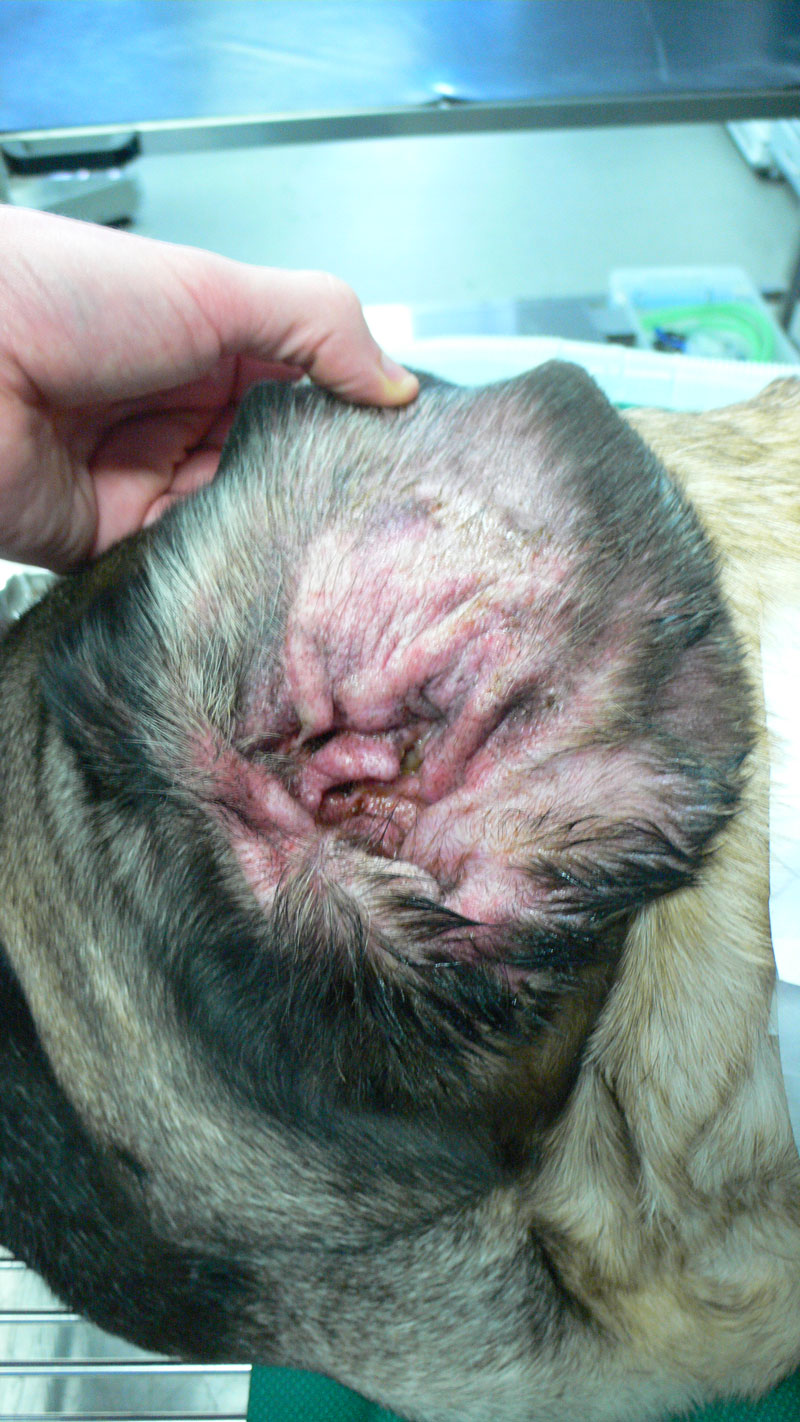Why Should I Bring my Pet to Willows for Food Allergy?
Willows is one of Europe’s leading small animal referral centres. Our state-of-the-art hospital is led by internationally renowned Specialists who are committed to providing the highest standards of veterinary care. The Dermatology service at Willows is led by Dr Richard Harvey BVSc DVD DipECVD PhD FRSB FRCVS, who is fully equipped to investigate the full range of allergic skin diseases in dogs and cats.
Our Dermatology service is supported by our multi-disciplinary team of Specialists across a number of disciplines including; Internal Medicine for pets suffering from food allergies with intestinal disease that requires additional investigation. This multidisciplinary approach ensures the highest standards of care for every animal.
What is a Food Allergy?
Food allergy is an allergic response to an ingested food component. In unaffected animals, foods are consumed, digested and absorbed by the body and this process is fundamental for normal growth and development. However in food allergy, the body’s immune system, which is normally required to fight off foreign invaders like viruses and bacteria, reacts to harmless food items.
In human food allergy, the inflammatory response to foods can be very dramatic and even life threatening in some cases i.e. peanut allergy. This severe response, known as anaphylaxis, is thankfully extremely rare in animals. In dogs and cats, food allergies usually present either as intestinal disease with signs like vomiting and diarrhoea or with skin disease, with itching, inflammation and recurrent skin infections. In some food allergic animals, the consumption of the offending food results in skin and intestinal disease together.
As the allergic reaction is specific, allergic animals usually tolerate other foods without problems. Food allergies in dogs and cats can develop between the ages of 13 weeks and 13 years, but normally begin in young adulthood. At present, there is no evidence that animals outgrow their food allergies, and so this disease is considered lifelong.
What Causes Food Allergy?
In the majority of cases, the offending foods are ingredients commonly found in the diets of dogs and cats. Meats such as chicken, beef, pork, lamb and turkey are commonly involved, as are foods such as wheat, soy, corn and rice. In some cases, affected animals can react to multiple foods. As food allergies take time to develop, food allergic animals often tolerate a food for some years before clinical signs start.

How is Food Allergy Diagnosed?
The patient’s history and clinical signs usually provide useful clues. Food allergies often present with itching, redness and rashes. The face, feet, ears, stomach and around the bottom are commonly affected. Some cases present with recurrent ear infections, and this can be the only clinical sign in some patients (Figure 1). The clinical signs of food allergy usually develop in young dogs and cats and are usually present all year round. Unfortunately, these clinical signs can also be present with the diagnosis of atopic dermatitis (environmental allergy) so the two diseases can be very difficult to distinguish without further diagnostic tests.
Figure 1: Inflammation of the ear in a dog with food allergy
At present, the only reliable way to diagnose a food allergy is to perform a dietary trial for six-eight weeks. The principle of this test is to remove all the food items in the current diet and feed a completely new and novel diet for the test period to ‘flush out’ any food substances that might be triggering a reaction. If there is an improvement in clinical signs by the end of the trial, a food allergy might be present. In order to confirm the diagnosis, the animal is usually fed its original food again to document a return of clinical signs. In some food allergic animals, this can occur within a few days of returning to the original diet.
The diet chosen for a dietary trial can be home cooked by the patient’s owners or can be one of a number of scientifically formulated diets suitable for allergy testing. The composition of the test diet is extremely important and should be discussed carefully with the Willows Dermatologist.
There are various blood tests available that claim to help in the diagnosis of food allergies in dogs and cats. However, at present, there is no evidence that they are informative and they cannot replace a properly performed dietary trial.

What Treatments are Available?
Luckily, of all the allergic diseases, food allergy is the easiest to control and treat. If the offending food substance can be identified, usually following a successful dietary trial, this item is excluded from the diet. If all the triggering foods are eliminated from the diet, clinical signs usually resolve and no further treatment is needed.
What Can I Expect if my Pet is Diagnosed with Food Allergy?
The outlook/prognosis for food allergy is usually very good if a dietary trial can be performed strictly and for the correct period of time. If the offending food items can be identified and eliminated from the diet, many dogs do not need further treatment.
To save this page as a PDF, click the button and make sure “Save as PDF” is selected.
Skin and Ear Clinic
Find out more
To assist owners whose pets have skin and ear conditions, we have put together a range of information pages to talk you through some of the more common dermatology conditions seen by our Specialist team.

